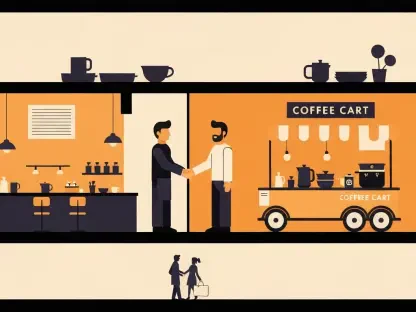Tastings play a pivotal role in shaping the culinary landscape of events, yet they often create division among industry professionals regarding their execution and significance. They provide a tangible preview of the possible gastronomic experience to be expected, helping align planners’ ambitions with caterers’ culinary prowess. However, the divergence in opinions about tastings can lead to clashes, as planners, caterers, and clients hold different views on what a tasting ought to entail. This divergence stems from varying expectations: some view tastings as essential strategic tools necessary to finalize event details, while others perceive them as complex, resource-intensive activities that require careful consideration and management. Should they be complimentary, or should they come at a cost? How should the process be organized to ensure all parties have a mutual understanding without stifling creativity or causing unnecessary friction? These questions fuel an ongoing debate, underscoring the intricate dynamics between event planners and caterers. As professionals navigate through these challenges, their approaches significantly impact the events’ ultimate success, making tastings an essential yet polarizing aspect of modern event planning.
The Importance of Tastings in Event Planning
Tastings have grown into a staple within the event planning industry due to their ability to bridge the gap between expectations and execution, ensuring that every detail of the dining experience aligns with the client’s vision. For high-profile events such as weddings, corporate functions, and branded experiences, tastings offer an invaluable opportunity to assess the food’s style, presentation, and taste, ultimately leading to tailored adjustments. Planners emphasize the necessity of tastings for establishing a menu that not only satisfies the client but also fits the thematic and budgetary constraints of the event. Furthermore, tastings enable caterers to showcase their culinary flair and adapt to the client’s feedback, ensuring the menu highlights the best features while satisfying all preferences.
Collaboration during tastings is crucial, as it fosters clearer communication channels among planners, caterers, and clients. It provides a platform where each party can express their needs and limitations, such as dietary restrictions or seasonal menu adjustments. Involving beverage experts in tastings can further enhance the dining experience, through discussions about drink pairings that complement the menu’s flavors. This holistic approach assures that all aspects of the meal resonate harmoniously with the event’s overarching theme. Tastings also allow planners and caterers to delve into sustainability practices and service approaches, making significant contributions to an event’s success.
Navigating Challenges and Frustrations
Despite the numerous advantages that tastings offer, they can become sources of frustration due to misaligned expectations among planners, caterers, and clients. Event planners may encounter dissatisfaction if they’re overlooked or not fully briefed during tastings, hindering their ability to advise clients effectively. A lack of thorough communication, such as failure to inform planners about menu alterations, can obstruct the planning process. Additionally, planners often dispute issues like insufficient menu options or caterers who struggle with client interaction, which prevents them from ensuring seamless event execution.
Conversely, caterers sometimes feel besieged by planners’ interference during tastings, particularly when planners lack understanding of the resources involved in executing such intricately prepared meals. Caterers advocate for direct client communication to ascertain dietary preferences and adjust menus accordingly. Moreover, caterers can view planners who continuously shop around without a clear vision as a hindrance to establishing fruitful catering relationships. Both parties must work toward mutual respect and transparent communication, as these challenges can be effectively addressed through proactive collaboration and dialogue.
Effective Communication and Collaborative Strategies
A necessary component for overcoming the challenges during tastings is fostering open lines of communication and cooperative strategies among planners, caterers, and clients. Pre-tasting discussions can serve as foundational conversations that set clear expectations and define goals, preventing misunderstandings. These meetings allow all involved in the event planning process to align themselves with a shared vision, pinpointing areas of compromise and innovation.
It’s essential for planners to prepare clients by providing clarity on what they’ll experience during tastings, from the food sampling to the caterer’s seasonal menu adjustments. Punctuality and understanding are similarly vital, and clients should be well briefed to appreciate the caterer’s efforts and the logistics required. Transcending communication barriers helps ensure that tastings foster a mutually beneficial environment where creativity flourishes without hindrance. This approach can enhance client satisfaction as well as cultivate long-term partnerships between planners and caterers, which reflects positively on event success.
The Debate Around Complimentary vs. Charged Tastings
The debate over whether tastings should be complimentary or charged is a frequent topic of discussion in the event industry. Some planners argue that offering free tastings contributes to improved client satisfaction by affirming their choice after booking a caterer, while caterers contend that tastings represent a substantial investment of time and resources deserving appropriate remuneration. Finding a balance between these perspectives could potentially lead to sustainable practices, aligning mutual needs.
A strategic approach suggests limitations on complimentary tastings, ensuring they remain feasible for caterers while not detracting value from the event. Integrating tastings as part of event budget plans provides another solution, incorporating tasting costs into overall expenditures as a package deal. Establishing clarity with clients regarding potential limitations or costs associated with tastings enhances transparency, providing an honest representation of what tastings entail.
Seasonality and Menu Planning
Understanding the implications of seasonality on menu planning is integral to effective tastings. Event planners and caterers should educate clients about how seasonal variations can impact ingredient availability and pricing, ensuring clarity on how fresh, regional produce can elevate the dining experience. Seasonality necessitates a flexible approach to tastings, where menu adjustments might mirror the availability of local ingredients, offering higher quality dishes.
Awareness of seasonal trends fosters a creative culinary environment in which various flavors and presentations are tailored to suit the event’s overarching theme and enhance its distinctiveness. By comprehending seasonality’s influence on menu curation, planners and caterers can work together to develop alignments that satisfy client expectations while championing sustainability. This understanding encourages a forward-thinking approach to tastings, embracing the dynamic nature of food production and enhancing client satisfaction.
Building Stronger Relationships Through Tastings
Ultimately, tastings serve as more than merely previewing culinary offerings; they effectively build stronger relationships among planners, caterers, and clients, promoting trust and collaboration. By viewing tastings as strategic investments, both planners and caterers can shift focus from potential points of contention to opportunities that create a solid foundation for successful events. This shift towards valuing tastings ensures the longevity of partnerships and enhances event quality, bringing satisfaction to everyone involved.
Clear communication and strategic planning during tastings help pave the way for satisfied clients and enduring professional connections. A strategic perspective emphasizes the building blocks of these relationships, fostering an awareness of the importance of partnership in achieving event success. Tastings become transformative opportunities where mutual understanding and creativity flourish, leading to memorable experiences and establishing the event planning industry as a realm where collaboration reigns supreme.
Conclusion: Shifting Perspectives and Embracing Collaboration
In the end, tastings are pivotal to the event industry, and their true potency is harnessed through cooperation between planners and caterers. By adopting collaborative strategies, both parties can transcend traditional barriers and embrace innovation, transforming tastings from potential challenges into solutions for seamless event execution. The transformative power of tastings lies not in merely previewing entrees, but in nurturing longstanding professional relationships that pave the way to event triumph.
For planners and caterers alike, embracing open communication and strategic collaboration during tastings led to stronger connections and elevated event success. Viewing tastings as opportunities, rather than obstacles, resulted in enhanced client satisfaction and enriched the planning process. The importance of shifting from competition to collaboration underscored the emphasis that tastings placed on understanding and creativity for producing successful events. Embracing such dynamics encouraged exceptional experiences and fostered an industry where mutual needs could be realized harmoniously.









